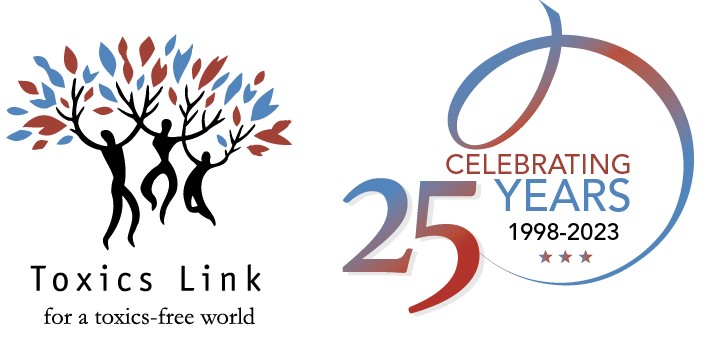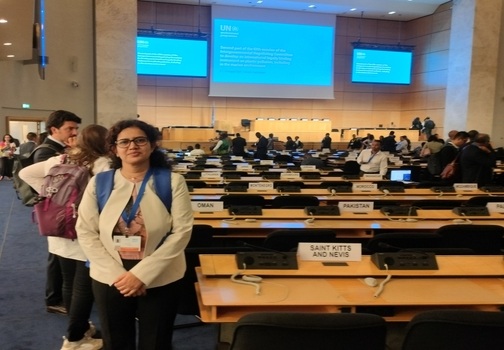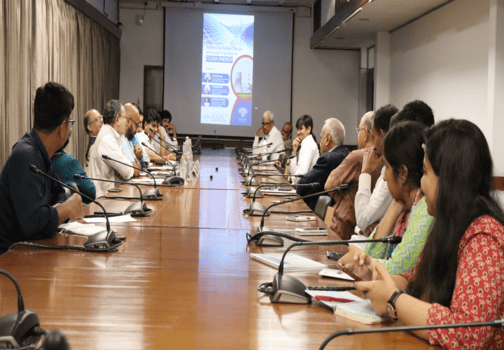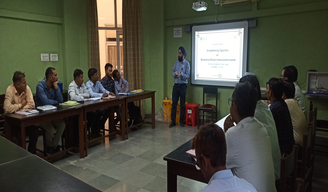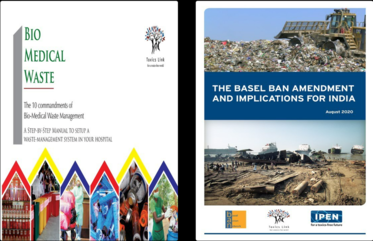Assessment of generation of e-waste
GOVERNMENT OF INDIA
MINISTRY OF ENVIRONMENT, FOREST AND CLIMATE CHANGE
RAJYA SABHA
UNSTARRED QUESTION NO. 675
TO BE ANSWERED ON 26.07.2021
Assessment of generation of e-waste
675. SHRI NEERAJSHEKHAR:
(a) the details of e-waste generated during 2019, 2020 and 2021 so far, in the country,
State-wise;
(b) the details of deaths reported due to e-waste in the country during 2018, 2019, 2020
and 2021 so far, State-wise;
(c) whether Government has assessed the increase in e-waste generation in the country year by year;
(d) if so, the details thereof and corrective steps taken in this regard; and
(e) if not, the reasons therefor?
ANSWER
MINISTER OF STATE IN THE MINISTRY OF ENVIRONMENT, FOREST AND CLIMATE CHANGE
(SHRI ASHWINI KUMAR CHOUBEY)
(a) Under the E-Waste (Management) Rules, 2016 amended time to time, twenty-one (21)
types of electrical and electronic equipment (EEE) has been notified. These notified EEE at
the end of their life becomes E-Waste. The input data for estimation of generation of e-waste
is available only from the year 2017-18 and for national level generation only. State Wise
data on e-waste generation is not available. Information on national level e-waste generation
is available financial year (FY) wise for the FY 2017-18, 2018-19 and 2019-20 and is given
in the table below:
S.No. Financial year Estimated Generation
(Tonnes)
% Increase
- 2017-2018 7,08,445 NA
- 2018-2019 7,71,215 8.86%
- 2019-2020 10,14,961.2 31.60%
(b) No deaths have been reported due to E-Waste.
(c) Yes, Government has assessed the increase in E-Waste in the country during 2017-18,
2018-19 and 2019-20. The formula for estimation of E-Waste generation involves sale of
EEE. Scrutiny of sales data reveal that there have been continuous increases in the sales
data since 2007-08 and hence there is an increase in E-Waste generation. The assessment
of e-waste generation is being carried out year wise. The increase in the generation of EWaste is given in the table above.
(d) The corrective steps regarding increase of E-Waste generation have been taken and are
given below:
Management of e-waste is regulated under the frame work of E-Waste (Management)
Rules, 2016 as amended time to time. The said rules are effective from 01.10.2016
and have the following specific objectives:
(i) Extended Responsibility to producers to manage a system of E-waste collection,
storage, transportation and environmentally sound dismantling and recycling
through EPR Authorization (EPRA).
(ii) To promote and encourage establishment of an efficient e-waste collection
mechanism.
(iii) To promote Environmentally Safe & Sound Recycling through authorized
dismantlers and recyclers of e-waste.
(iv) To minimize illegal recycling / recovery operations.
(v) Reduce Hazardous substances in Electrical and Electronic components.
As per the rules, CPCB is issuing EPR authorization to the producers of EEE along
with e-waste collection targets on annual basis. As per the information provided by
CPCB, a total no of 1766 Producers have been registered for EPR Authorization and
also 57 Producers Responsibility Organizations (PROs) have obtained registration.
Presently 400 dismantlers/recyclers of E-Waste are operating in 20 States namely
Andhra Pradesh, Assam, Chhattisgarh, Gujarat, Goa, Haryana, Himacahal Pradesh,
Jammu & Kashmir, Jharkhand, Karnataka, Madhya Pradesh, Maharashtra, Odisha,
Punjab, Rajasthan, Tamil Nadu, Telangana, Uttar Pradesh, Uttarakhand and West
Bengal. These authorised dismantlers/recyclers have annual processing capacity is
10,68,542.72 tonnes.
For enforcement of the said rules in the country, an action plan is in place and the
same is being implemented by all SPCBs/PCCs in their respective states/UTs.
SPCBs/PCCs are submitting quarterly progress report as envisaged in the Action Plan
through a web portal developed for this purpose.
(e) In view of the above this does not arise.
